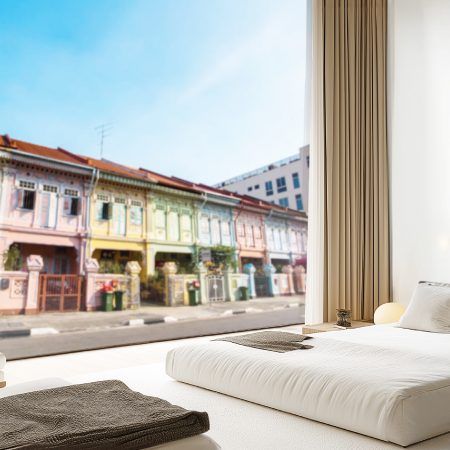Sleep of faith: 4 hotel sanctuaries
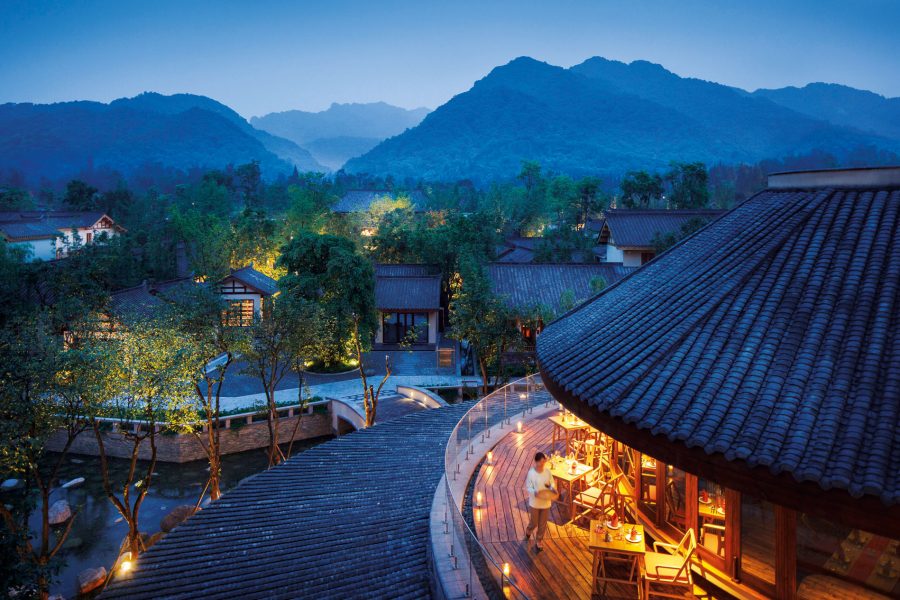
Travelling to religious sites is as old as faith itself. Across an array of creeds, adherents make pilgrimages involving considerable sacrifice. But nowadays some of the most sacred places in Asia are also home to impressive hotels. These four luxury sanctuaries allow curious explorers to expand their understanding of the region’s faiths while basking in some thoughtful indulgences.
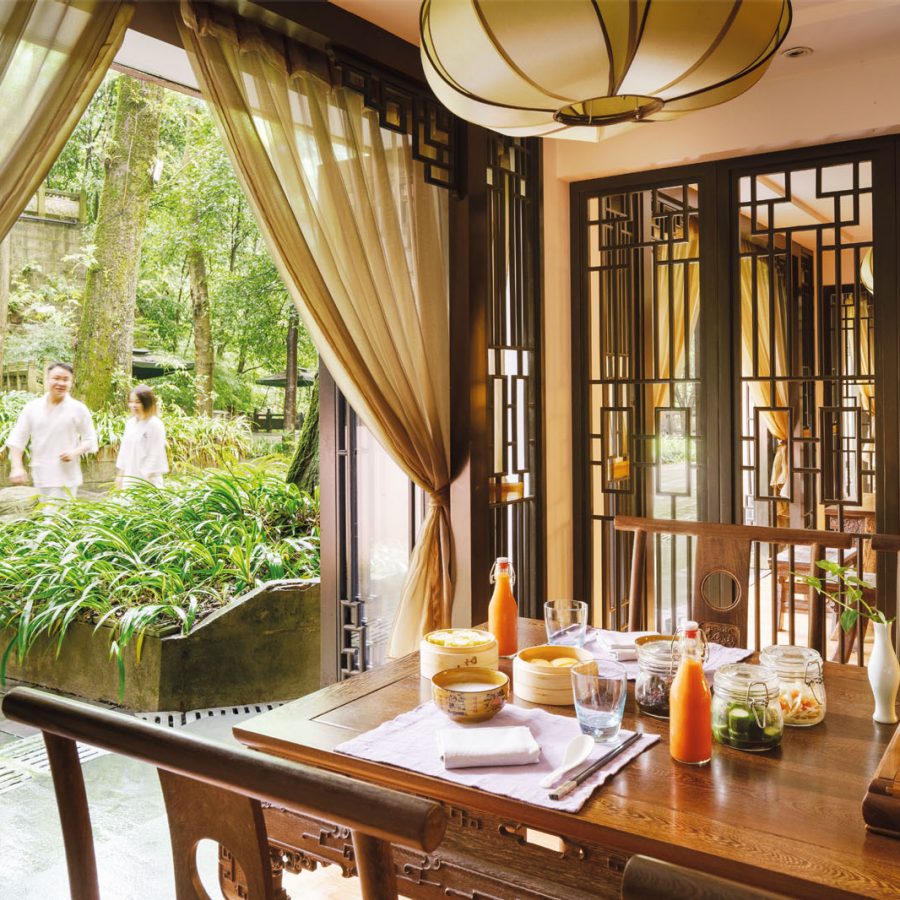
Credit: Seth Powers
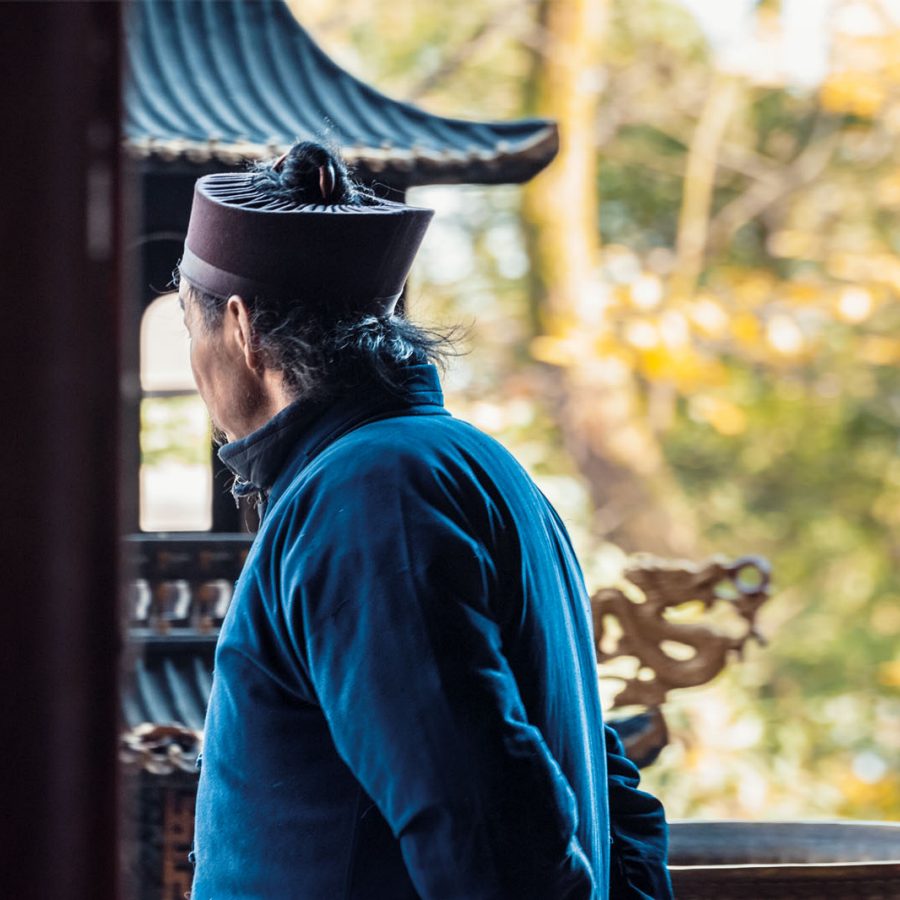
Credit: Tang Chao
Six Senses Qing Cheng Mountain
Chengdu, China
In a still-pristine bamboo forest outside Chengdu, Asia’s venerable wellness hotel brand provides a base from which to discover a birthplace of Taoism. Stone paths and meandering streams criss-cross this bucolic 113-room resort of low-rise structures with upturned Chinese rooflines. Pale, unvarnished wood interiors surround inviting beds made with organic-cotton sheets. A five-minute drive leads to Mount Qingcheng, a UNESCO World Heritage site where second-century philosopher Zhang Ling founded a sect of Chinese Taoism. Eleven major Taoist shrines dot Qingcheng, including Changdao Temple, built over the place where Zhang preached to his earliest followers. Back at the resort, guests can tap Taoism’s healing powers at the Six Senses Spa with its Daoyin Tao massage or try traditional Chinese therapies like cupping, acupuncture and gua sha to stimulate blood circulation. sixsenses.com
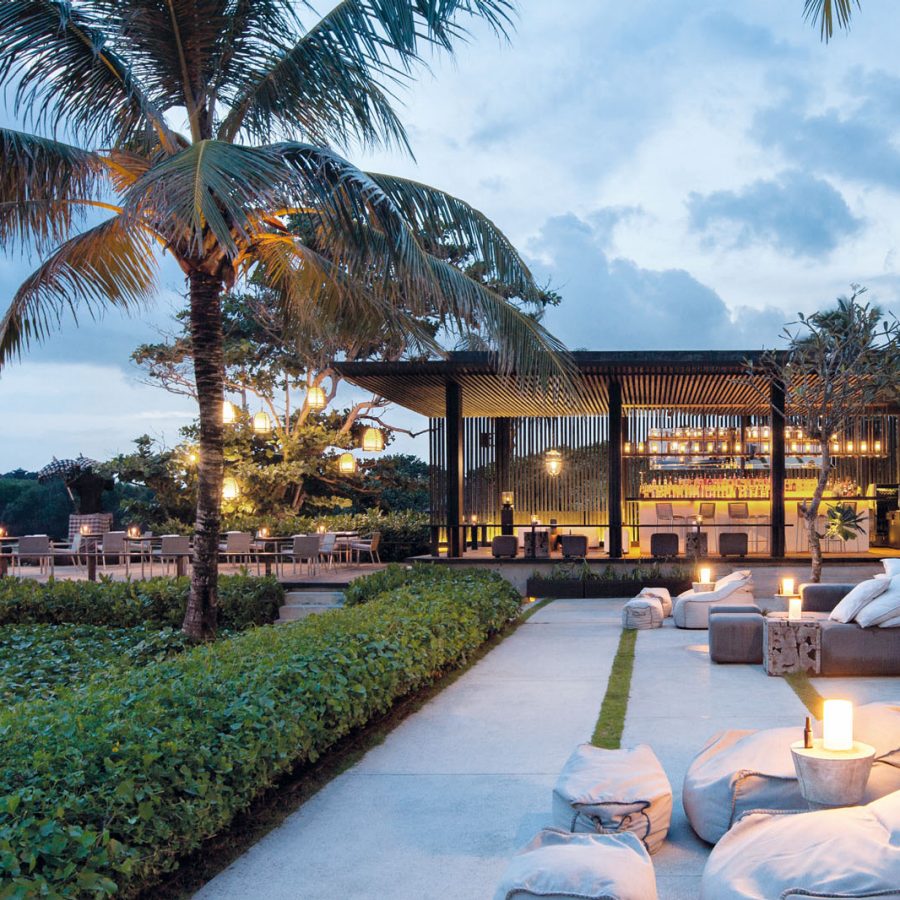
Credit: Soori Bali
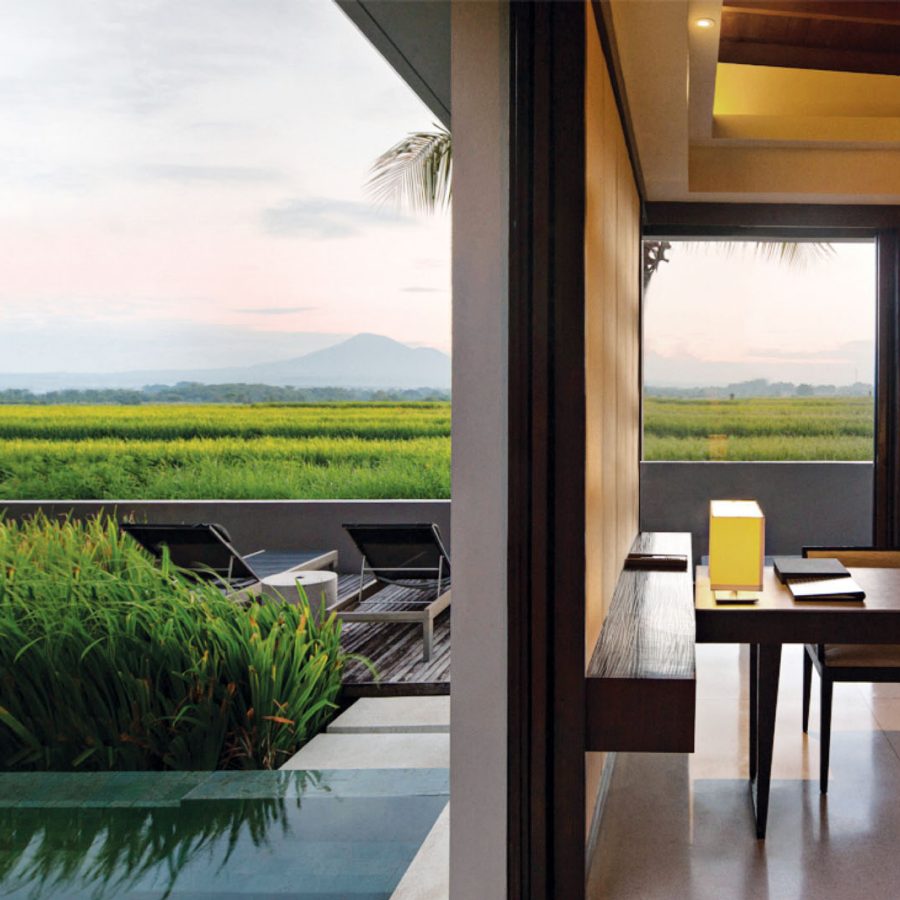
Credit: Soori Bali
Soori Bali
Bali, Indonesia
Indonesia’s ‘Isle of the Gods’ boasts innumerable family temples, rice temples, royal temples, water temples and other intimate shrines. None conjure as dramatic a presence as Tanah Lot, a 16th-century Hindu sanctuary known as the Temple of the Earth in the Sea built on a rocky outcropping off Bali’s rugged southwestern coast. On a wide scarf of black sand beach just north of Tanah Lot sits this eco-chic collection of 48 sea-facing pool villas built with locally sourced sandstone and volcanic lava stone. Such proximity means the hotel concierge can easily arrange sunrise excursions so that guests may witness Tanah Lot’s most magical moments, before noisy crowds descend. sooribali.com
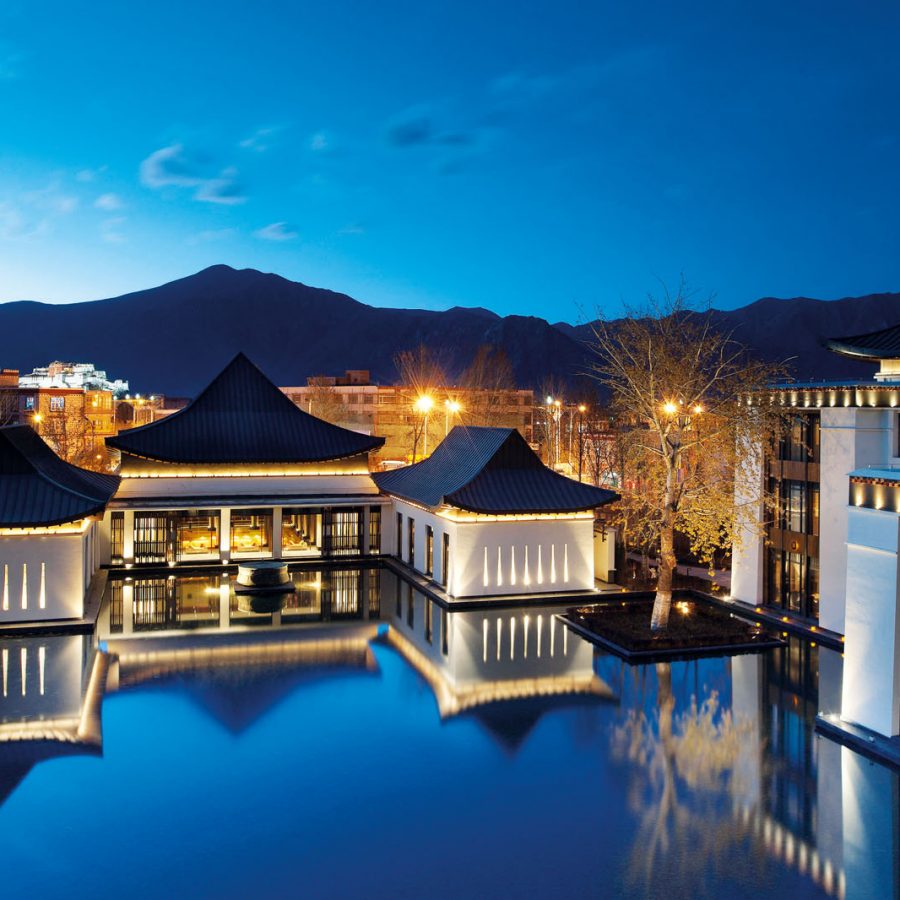
Credit: Ralf Tooten
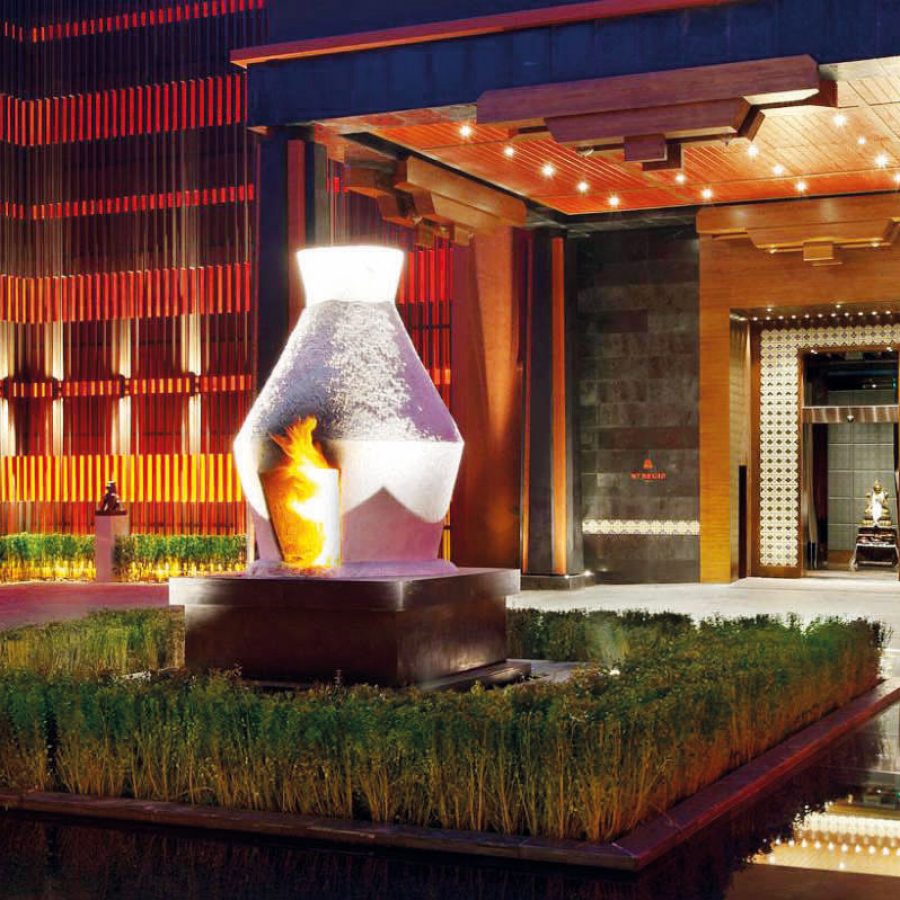
Credit: Ralf Tooten/ St Regis
The St Regis Lhasa Resort
Lhasa, China
In 1645, Tibet’s much-revered Fifth Dalai Lama began construction of the 1,000-plus room Potala Palace, filled with 10,000 Buddhist statues, all to house the supreme leaders of Tibetan Buddhism. Today, the St Regis Lhasa Resort sits in the shadow of that revered hilltop retreat. These 150 sumptuous, butler-served guest rooms and 12 expansive villas are embellished with Tibetan art work. All overlook the perennially snow-tipped Himalayas. The world’s highest luxury spa delivers indigenous healing using Tibetan herbs and plants such as cypress and azalea leaves, yoga and meditation. Beyond the hotel’s walls sits the sacred Jokhang Temple, a pilgrimage site for Tibetans and Buddhists from around the world. marriott.com
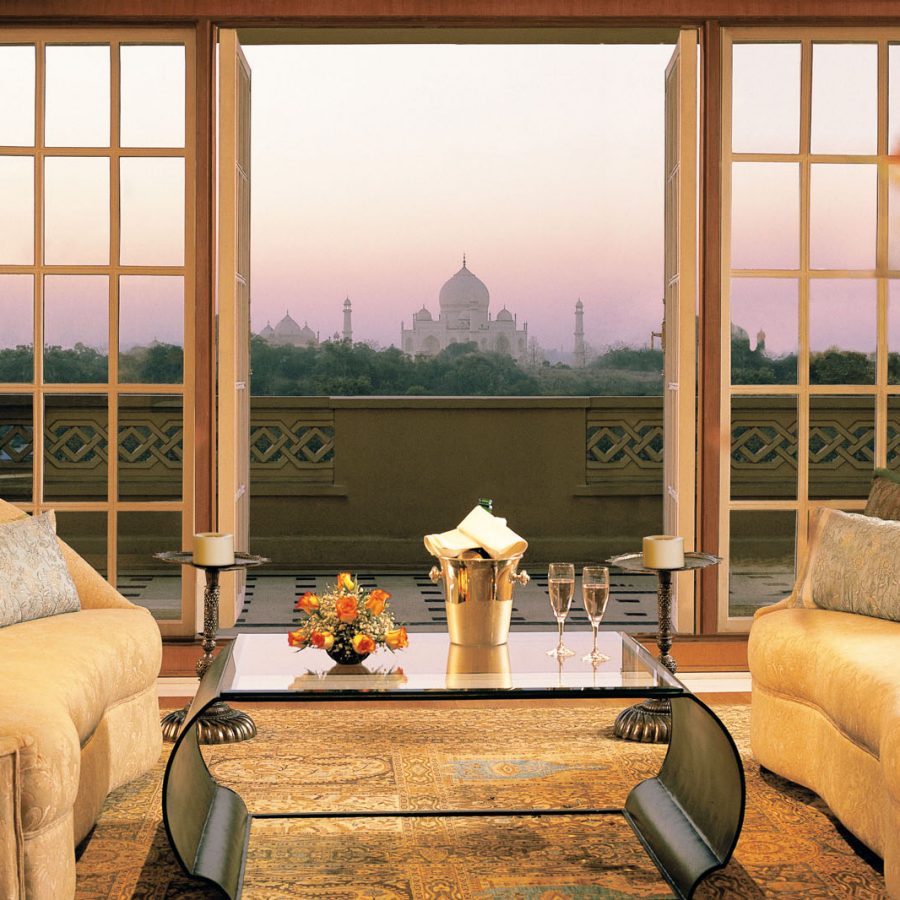
Credit: Oberoi Hotels & Resorts
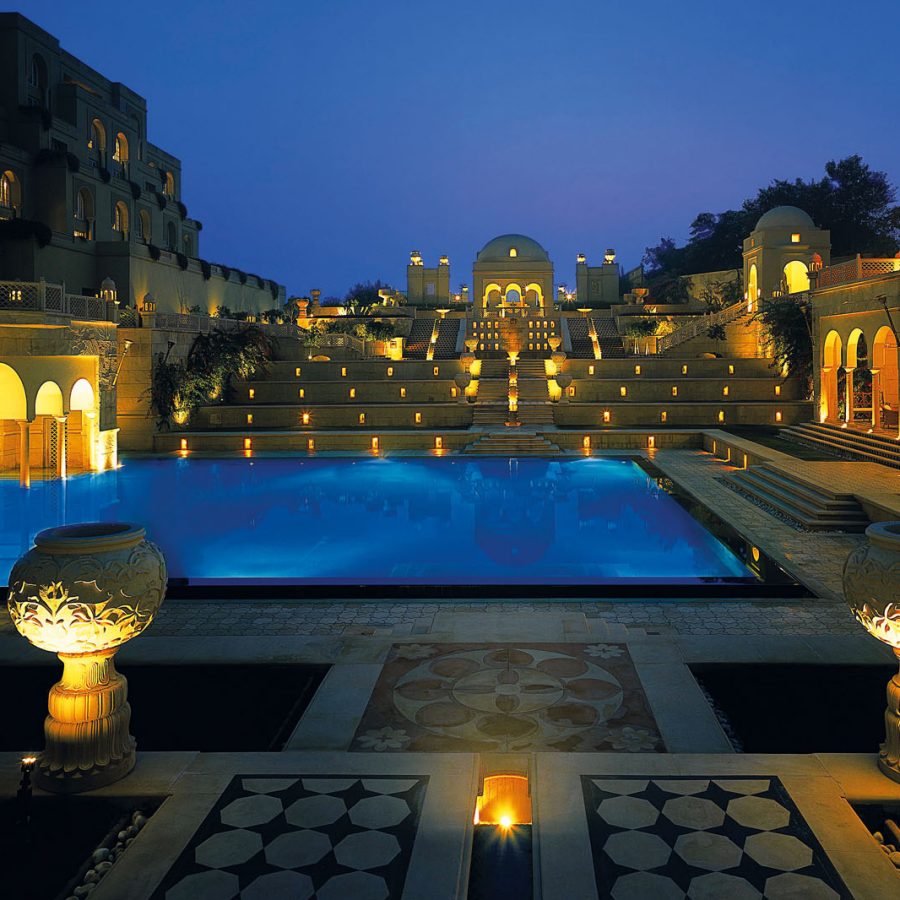
Credit: Oberoi Hotels & Resorts
Oberoi Amarvilas
Agra, India
Best known for its jaw-dropping views of the Taj Mahal, this Agra outpost admirably optimises its location a mere 600 metres from the 17th-century Mughal masterpiece. But nearby, the emperor Shah Jahan also erected what is still India’s largest mosque, the red sandstone and white marble Jama Masjid, known as the ‘Friday mosque’. The mosque is crowned by three striking bulbous domes finished with inverted lotus finials, while inside lies the celebrated Sufi saint Salim Christi, surrounded by marble walls with Persian inscriptions. Back at the hotel, which was inspired by Rajasthani palaces, Indian craftsmanship is also on full display. Custom, hand-knotted rugs top polished timber floors, while marble-inlay writing desks, silk cushions and original art work complete the opulent space. oberoihotels.com
Related stories
- China – the Chinese Mainland, Hong Kong SAR, Macao SAR and Taiwan Region
- Hong Kong SAR - English
- Chinese Mainland (China) - English
- Taiwan, China - English
- 香港特別行政區 - 繁體中文
- 中国內地 - 简体中文
- 中國台灣 - 繁體中文
- Africa
- South Africa - English
- Asia
- Bangladesh - English
- Korea - English
- Singapore - English
- Cambodia - English
- 한국 - 한국어
- Sri Lanka - English
- India - English
- Malaysia - English
- Thailand - English
- Indonesia - English
- Maldives - English
- ประเทศไทย - ภาษาไทย
- Indonesia - Bahasa Indonesia
- Myanmar - English
- Vietnam - English
- Japan - English
- Nepal - English
- Việt Nam - tiếng Việt
- 日本 - 日本語
- Philippines - English
- Australasia
- Australia - English
- New Zealand - English
